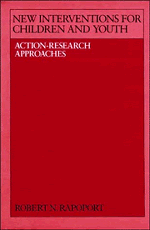Summary
Between the ages of five and fifteen, most children spend much of their time in schools. Schools are meant to ensure the basic competence for children to learn the skills required for adult roles. Literacy, numeracy, conceptual development, and a sense of history are among the core elements of school programs. While it is recognized that schools have other functions (e.g., training for moral development, citizenship, social competence, and the development of personal interests), these are often implicit and unsystematized (Epps and Smith, 1984). Schools vary in their social structure, pupil composition, and physical plant as well as in the quality of their teachers; all these things affect the child's schooling experience (Rutter et al., 1979).
Schools represent the only set of social institutions that is commensurate with families in the influence they can have over a child's development after infancy. There is an enormous body of research which seeks to identify and assess the role played by school factors, as compared with family factors, in a child's development. One issue has centered on the degree of influence a school can have on a child's development, and the extent to which education can or cannot compensate for deficiencies in a child's biological background or early socialization (Jensen, 1969; Jencks etal, 1972).
- Type
- Chapter
- Information
- New Interventions for Children and YouthAction-Research Approaches, pp. 89 - 147Publisher: Cambridge University PressPrint publication year: 1987



